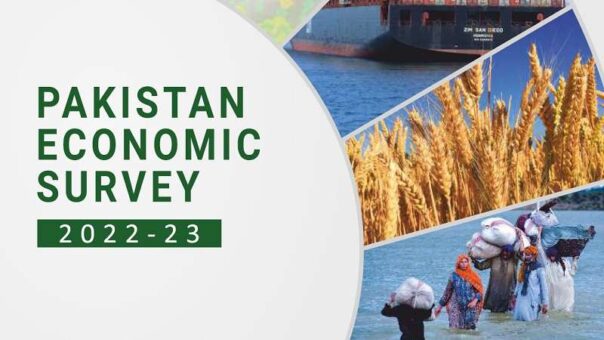The Pakistan Economic Survey for the fiscal year 2022-23 highlights the various challenges faced by Pakistan’s economy during this period. The geopolitical situation, difficult financial environment, and high inflationary pressures have all had a significant impact on the global growth prospects, and Pakistan was not immune to these challenges. Additionally, devastating floods and political unrest further exacerbated the economic situation, making FY2023 a challenging year for Pakistan’s economy.
In the previous fiscal year, Pakistan witnessed a high growth rate of 6.1 percent, but it was deemed unsustainable as it relied heavily on domestic demand, which was stimulated by expansionary fiscal policies. Consequently, the country experienced high fiscal and current account deficits, signaling excessive demand and overheating.
At the beginning of FY2023, the economy faced four major challenges that posed threats to Pakistan’s socio-economic growth. These challenges included regaining sustainable macroeconomic stability, reducing poverty, fiscal consolidation, and addressing weaknesses in the external account.
READ MORE: Finance Ministry Launches Pakistan Economic Survey 2022-2023 Today
The government’s overall vision is to achieve high and sustainable GDP growth with price stability in the medium term. The government is committed to implementing home-grown macroeconomic and structural reforms to create job opportunities and reduce poverty. Efforts are being made to rebuild investor confidence by addressing macroeconomic imbalances through an optimal policy mix. Simultaneously, the government is protecting vulnerable populations through well-funded social safety nets and targeted subsidies.
One significant setback during FY2023 was the unprecedented episode of torrential rains and flash flooding in July-August 2022, affecting millions of people and causing extensive damage. The floods submerged one-third of the country, resulting in loss of life, displacement, and economic losses amounting to 4.8 percent of GDP. The recovery and reconstruction needs were projected to be 1.6 times the budgeted national development expenditure for FY2023.
The government, which came into power in April 2022, has implemented measures focused on rationalizing expenditures, reducing unproductive subsidies, cutting expenditures to reduce the budget deficit, increasing government revenue, and implementing a tight monetary policy to combat inflation. Efforts have been made to improve social safety programs and promote public-private partnerships for economic development.
The disciplined implementation of the macroeconomic stabilization program has shown positive results in the current fiscal year. The fiscal deficit was contained at 3.6 percent of GDP during the first three quarters of FY2023, compared to 3.9 percent in the same period last year. The primary balance achieved a surplus, attributed to a slowdown in non-markup expenditures.
READ MORE: Pakistan Budget FY24: Key Taxation Measures Likely Through Finance Bill 2023
The current account, which had been in deficit for some time, turned to a surplus in March 2023 and April 2023. This marked the first monthly current account surplus since 2020. The current account deficit is expected to decelerate from the high levels of FY2022 to around US$3.7 billion by the end of the fiscal year.
Despite these positive developments, Pakistan’s economy still faces pressures from an uncertain global security situation, higher inflation driven by food prices, a volatile stock market, a contraction in large-scale manufacturing, lower-than-anticipated foreign inflows, and growing financing requirements.
As a result, inflationary pressures persist, and prices remain stubborn, posing ongoing challenges for the economy.
Overall, the Economic Survey highlights the challenges faced by Pakistan’s economy in FY2023. While some progress has been made in terms of fiscal consolidation and external account improvement, there are still significant hurdles to overcome. Continued efforts to address these challenges and implement sustainable economic reforms will be crucial for Pakistan’s future economic growth and stability.
READ MORE: Pakistan Budget Preview For Fiscal Year 2023-2024
